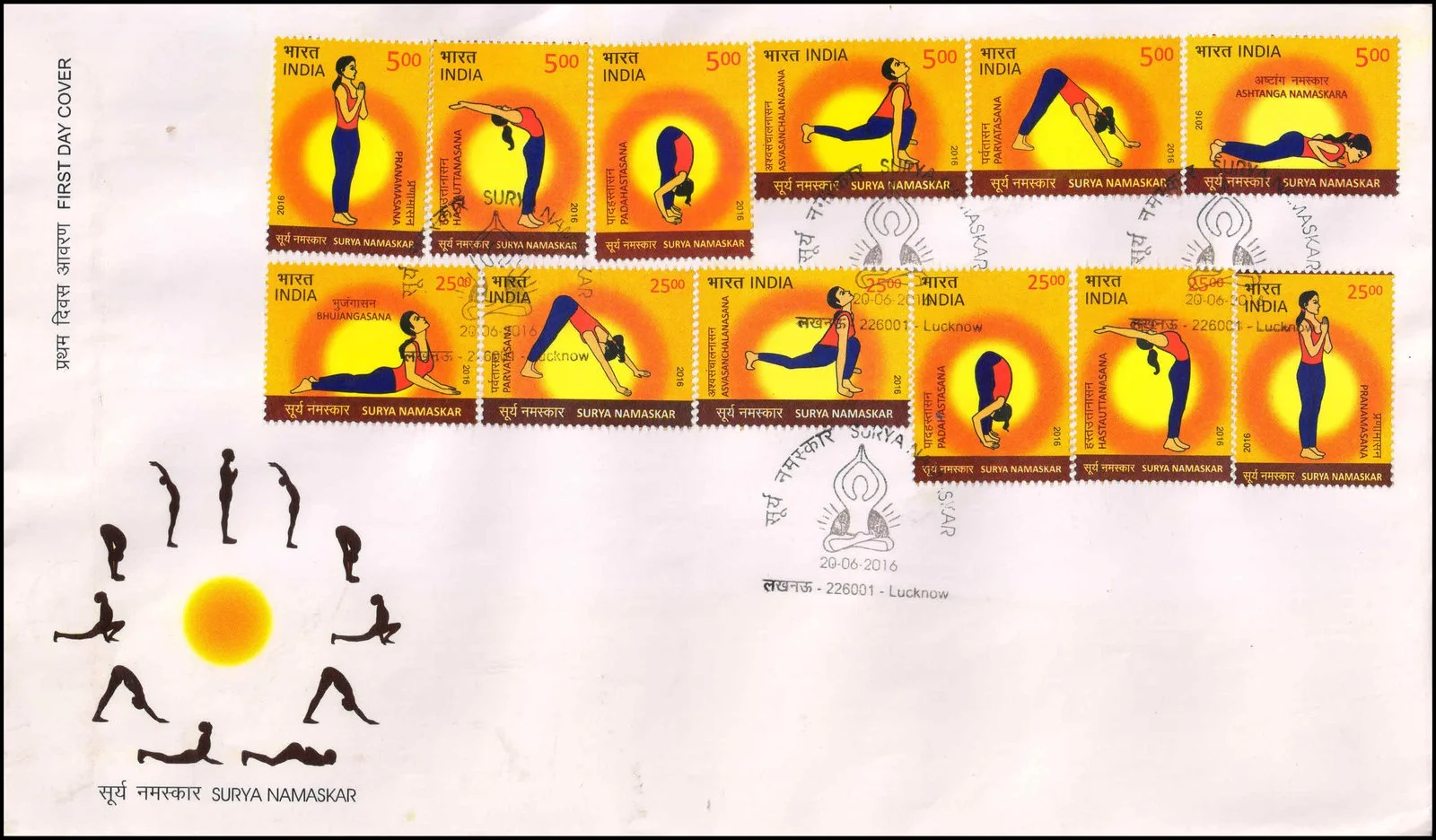Parvatasana

Technical Data
| Stamp Set | Surya Namaskar |
|---|---|
| Date of Issue | June 20, 2016 |
| Denomination | Rs. 5 |
| Quantity | 300,000 |
| Perforation | 13¾ x 13¼ |
| Printer | Security Printing Press, Hyderabad |
| Printing Process | Wet Offset |
| Watermark | No Watermark |
| Colors | Multicolor |
| Credit (Designed By) | Ms. Nenu Gupta |
| Catalog Codes |
Michel IN 2970A Yvert et Tellier IN 2684 Stanley Gibbons IN 3141 |
| Themes | Women |
Introduction
Parvatasana, also known as the Mountain Pose, is the fifth and eighth posture in the Surya Namaskar sequence. The name comes from the Sanskrit word “Parvata” meaning mountain, symbolizing stability, firmness, and stillness. The pose resembles the shape of a mountain, representing strength, balance, and a calm mind rooted in inner awareness.
Meaning and Significance
Parvatasana signifies steadiness and grounded energy, much like a mountain standing tall and unmoved. It encourages mental clarity and emotional stability by harmonising breath and posture. This asana teaches the practitioner to remain composed, promoting balance between physical effort and inner stillness. It also reflects patience and resilience—qualities essential in yogic life.
How to Practice Parvatasana
- From Ashwasanchalanasana, take the left foot back beside the right foot.
- Raise the buttocks upward while lowering the head between the arms.
- The body forms an inverted V-shape or mountain-like posture.
- Keep the arms and legs straight without strain.
- Attempt to press the heels towards the floor for a deeper stretch.
- Bring the head closer to the knees if comfortable, maintaining a natural breath.
- Focus the awareness on relaxing the hips or on the throat region.
Benefits of Parvatasana
This posture stretches and strengthens the entire body. It boosts circulation, supports digestion, and helps release tension from the muscles.
Physical Benefits
- Strengthens the arms, shoulders, wrists, legs, and back
- Stretches the spine, hamstrings, calves, and Achilles tendon
- Helps improve posture and balance
- Relieves stiffness from the neck, shoulders, and back
Internal System Benefits
- Improves blood flow to the head, enhancing concentration
- Stimulates the digestive system and removes toxins
- Helps regulate metabolism and supports the endocrine system
Mental and Emotional Benefits
- Induces calmness and mental clarity
- Reduces anxiety, restlessness, and fatigue
- Promotes inner balance, stability, and resilience
Role in Surya Namaskar
Parvatasana appears twice in one half-round of Surya Namaskar—as the 5th and 8th posture. It acts as a connecting pose that balances movement and breath while preparing the body for deep spinal work. As a transitional posture, it provides a moment of grounding and alignment, helping harmonise energy before progressing into the deeper poses that follow.
Conclusion
Parvatasana is a powerful posture that cultivates strength, stability, and serenity, just like a mountain. As part of Surya Namaskar, it helps align the body, calm the mind, and stabilise the breath, making it an essential posture for enhancing physical wellness and inner peace. Regular practice promotes flexibility, balance, and emotional steadiness, contributing to a holistic yogic experience.
Commemorative Stamps on Surya Namaskar
To mark International Yoga Day on 21 June 2016, the Department of Posts released a set of 12 Commemorative Postage Stamps, each depicting one of the 12 positions of Surya Namaskar highlighting Yoga’s cultural and spiritual significance.
First Day Cover

